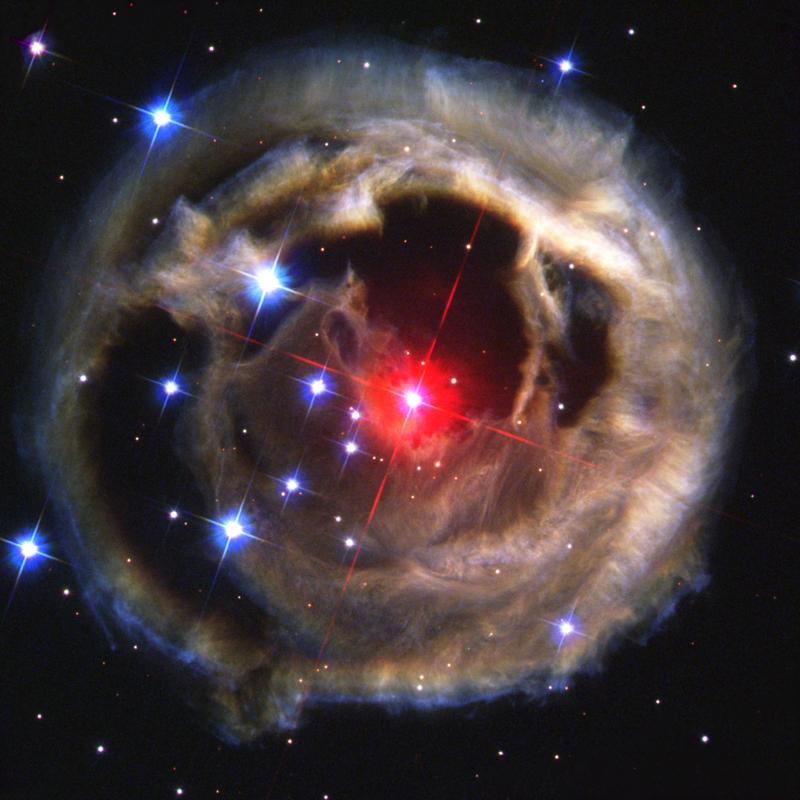







| BOOKS | F. A. Q. | ARTICLES | TALKS | ABOUT KEN | DONATE | BEYOND OUR KEN |
|---|
By Ken Croswell
Published on New Scientist (August 15, 2016)

Hubble catches V838 Monocerotis in action; V1309 Scorpii is too shy. Credit: Hubble Space Telescope. NASA, ESA, and Howard E. Bond (STScI)
Like most people, stars seem to prefer their privacy when getting it on. A pair of stars that recently merged into one have thrown up thick veils of dust blocking the view of most outsiders.
The pair came to attention in 2008, when observers detected an unusual nova in the constellation Scorpius. Most novae come from small hot stars that brighten greatly before fading back to normal. These novae turn blue. But the 2008 nova turned red, growing bright enough to rival the most luminous stars in the Galaxy for a short time.
By good luck, astronomers were monitoring this part of the sky for planets passing in front of stars. As a result, the scientists had observed the star an incredible 1340 times before the explosion, making it the best ever seen between two ordinary stars.
Star-crossed lovers
It emerged that the pre-nova star had actually been a pair of stars spiralling closer and closer together. The 2008 red nova marked the moment when the duo joined together and formed a single fast-spinning star, dubbed V1309 Scorpii.
Now Romuald Tylenda at the Nicolaus Copernicus Astronomical Center in Torun, Poland, and Tomasz Kaminski at the European Southern Observatory in Santiago, Chile, have analysed observations of the post-nova star, which is roughly 10,000 light-years from Earth.
Visible light from the star has faded dramatically, but it still glows brightly at infrared wavelengths. �The object is still quite luminous,� says Tylenda.
Dust�s up
The cause? Lots of dust. �The dust started being formed very quickly after the eruption,� Tylenda says. The dust blocks the star�s visible light, which in turn heats the dust before being emitted as infrared radiation.
We are viewing V1309 Scorpii edge-on where the dust is thickest, thanks to centrifugal force from the fast-spinning star flinging gas off its equator. As the gas cooled, it produced dust particles a few months after the nova.
To get a closer look at the merging stars, we would need to be above or below its poles. In fact, Tylenda speculates that we are probably located near the polar axis of V838 Monocerotis, another red nova which erupted in 2002. Aided by our favourable position, the Hubble Space Telescope snapped a picture (see above) that captured pre-eruption dust located far from the star, an image viewers voted one of the two best that the telescope has ever taken.
Ken Croswell earned his Ph.D. in astronomy from Harvard University and is the author of The Alchemy of the Heavens and The Lives of Stars.
"An engaging account of the continuing discovery of our Galaxy...wonderful." --Owen Gingerich, The New York Times Book Review. See all reviews of The Alchemy of the Heavens here.
"A stellar picture of what we know or guess about those distant lights."--Kirkus. See all reviews of The Lives of Stars here.
| BOOKS | F. A. Q. | ARTICLES | TALKS | ABOUT KEN | DONATE | BEYOND OUR KEN |
|---|